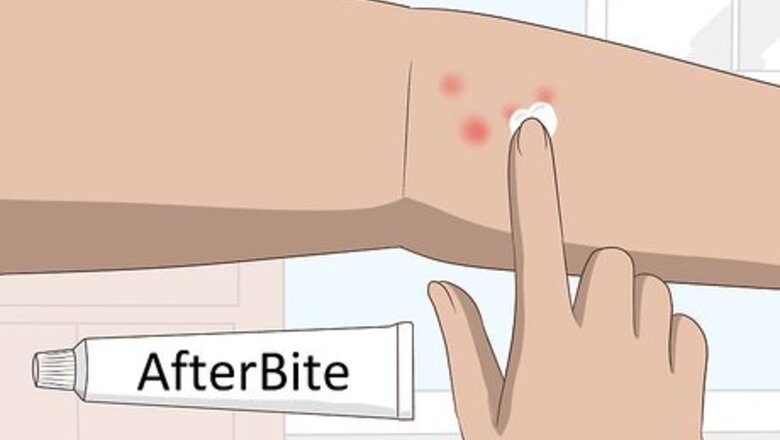
views
Reducing Itching and Inflammation
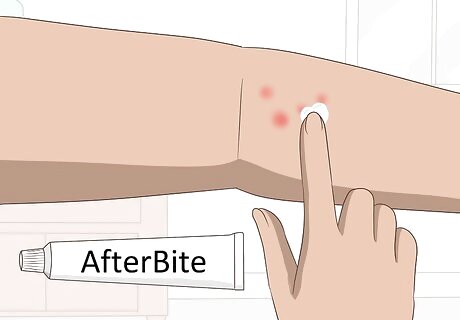
Use over-the-counter anti-itch cream if you have a few small bites. The best way to treat itching caused by bug bites is to use an anti-itch cream designed to do just that. This is also the best treatment method if you only have 1 or 2 itchy bites, since that means you’ll only need to apply a little bit of cream. You only need to apply enough anti-itch cream to your gnat bites so that each bite is covered with a thin layer of the cream. You can generally find anti-itch cream at a low price at any pharmacy and most department stores. Some recommended brands of anti-itch cream designed to treat but bites include StingEze and AfterBite.
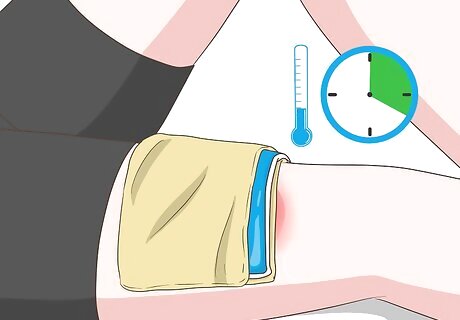
Place an ice pack wrapped in cloth on the bite to treat painful swelling. Not only will the ice numb the area around your bite and make it less itchy, but it will also help reduce any swelling or pain that the bite is causing. Hold the wrapped ice pack to the bite for up to 20 minutes, then remove it for 20 minutes. Repeat this process as necessary. Make sure the ice pack is wrapped in a thin towel before you use it. Applying a cold ice pack directly to unprotected skin can lead to skin damage if you leave it there for too long.
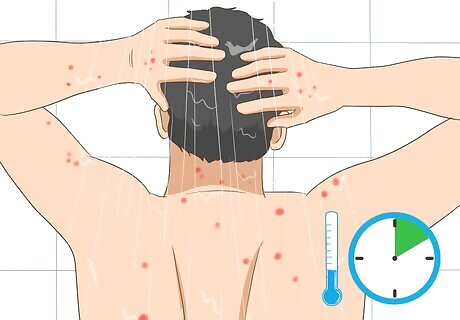
Take a cold shower if you have multiple gnat bites. The cool water will help to reduce the itching and swelling caused by gnat bites. This method is especially useful if you have multiple bites, since the shower will cover all of them with cold water at the same time. Aim to shower in cold water for about 10 minutes to get the full effect on your bug bites. Use a clean towel to gently pat yourself dry afterwards. You can also opt to take a cool bath instead of a shower, especially if most of the gnat bites are on your legs.
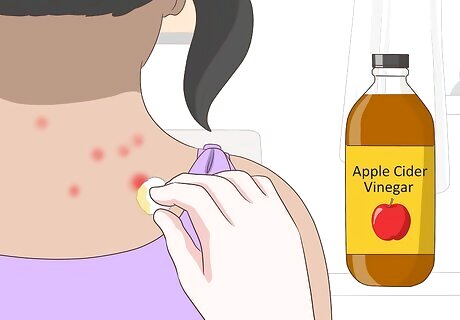
Apply apple cider vinegar to the bite for a natural home remedy. Apple cider vinegar is not only an easy and natural way to treat itchy bug bites, but it also has anti-inflammatory properties that can help reduce swelling. Soak a small cotton ball in the vinegar and apply it directly to the bite. You only need to apply the vinegar for a few seconds for it to have an effect on your gnat bite.
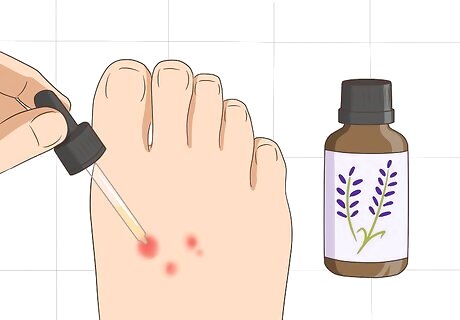
Put essential oil on the gnat bite to also help avoid infection. Applying a few drops of diluted essential oils to your bite will help reduce itching and swelling in no time. Many essential oils, such as the lavender and tea tree varieties, also help prevent infection, making them a potent treatment for gnat bites. Make sure you dilute your essential oil with a carrier oil, such as almond, apricot, jojoba, or coconut oil, before applying it to your gnat bite.
Treating Your Bites and Avoiding Infection
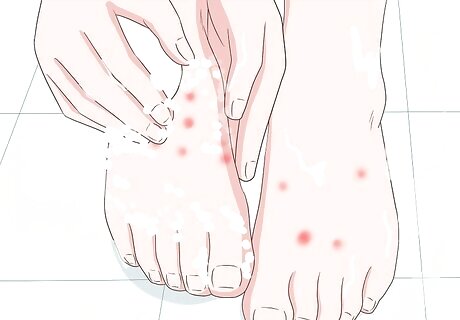
Clean your bite with soap and water as soon as possible. The first step to treating a gnat bite is to clean it, immediately after being bitten if possible. This will greatly reduce the chances of bacteria getting into the tiny wound and causing an infection. You can also clean the area with an alcohol- or vinegar-based disinfectant, though soap and water are the most widely recommended cleaning fluids for bug bites.
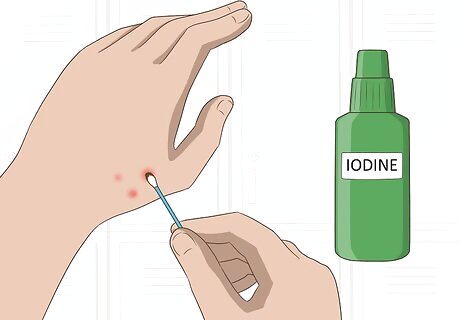
Apply an antiseptic to the bite to help it heal faster. The antiseptic will further help to prevent the bacteria that gnats carry around with them from causing an infection in your bite. This sort of prevention helps keep the process of healing from a gnat bite as quick and as painless as possible. Common antiseptics to use for bug bites include rubbing alcohol, iodine, and hydrogen peroxide.
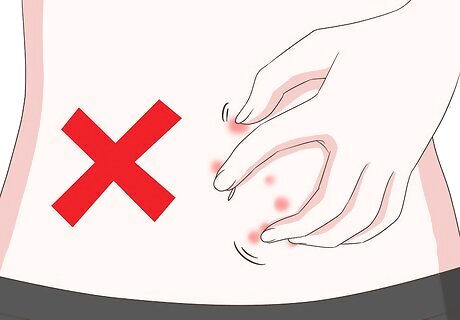
Refrain from scratching your gnat bites to better avoid infection. When you scratch at your bite, you run the risk of breaking the skin and opening the wound for possible bacterial infections. If you find it impossible to stop scratching, at least cut your fingernails short to reduce the risk of opening the wound again. If you can’t stop scratching, your best bet will be to use an anti-itch cream or an ice pack wrapped in cloth to treat an itchy bug bite.
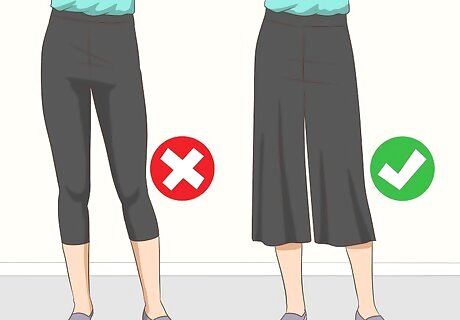
Wear loose clothing to avoid irritating your skin. Wearing tight clothes that constantly rub against your skin will not only irritate it, but it will also make your gnat bites even itchier. Try to avoid irritating fabrics as well, such as wool, to best prevent skin irritation. Wearing loose clothing may also have the added benefit of preventing additional gnat bites, depending on how long your clothes are.
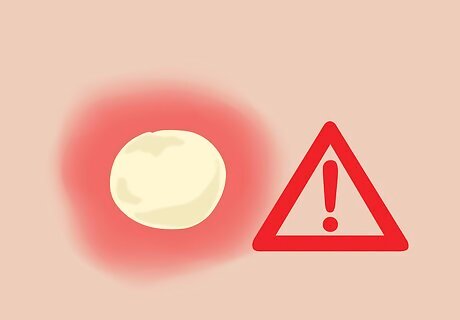
Watch out for signs of infection. The principal symptom of an infected bug bite will be the appearance of pus-filled blisters around the area of the bite. If you see these blisters, or if the bite area starts to become even more swollen over time, you’ll need to visit a doctor to have the infection treated. Other early signs of a potential skin infection include redness, tenderness, or an unusual warm feeling in the affected area. Your doctor will most likely give you a prescription for a topical treatment to help you get rid of the infection.
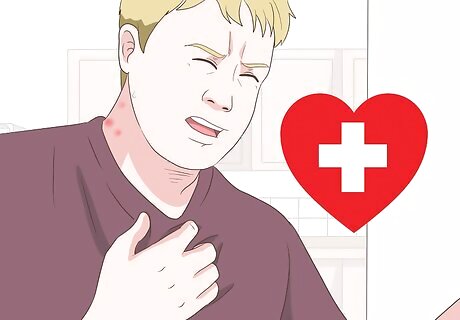
Seek treatment immediately if you start having trouble breathing. If you suddenly find it difficult to speak and breath, feel a swelling in your throat, and begin to feel dizzy, you may be experiencing anaphylactic shock. This is a rare but very serious allergic reaction to bug bites. Call an ambulance immediately to be treated by a doctor right away. This type of allergic reaction normally occurs within minutes after a person has been bitten. If more than an hour has passed since you were first bitten by a gnat, you probably don’t need to worry about experience anaphylaxis. The typical treatment for anaphylactic shock is an injection of adrenaline.

















Comments
0 comment